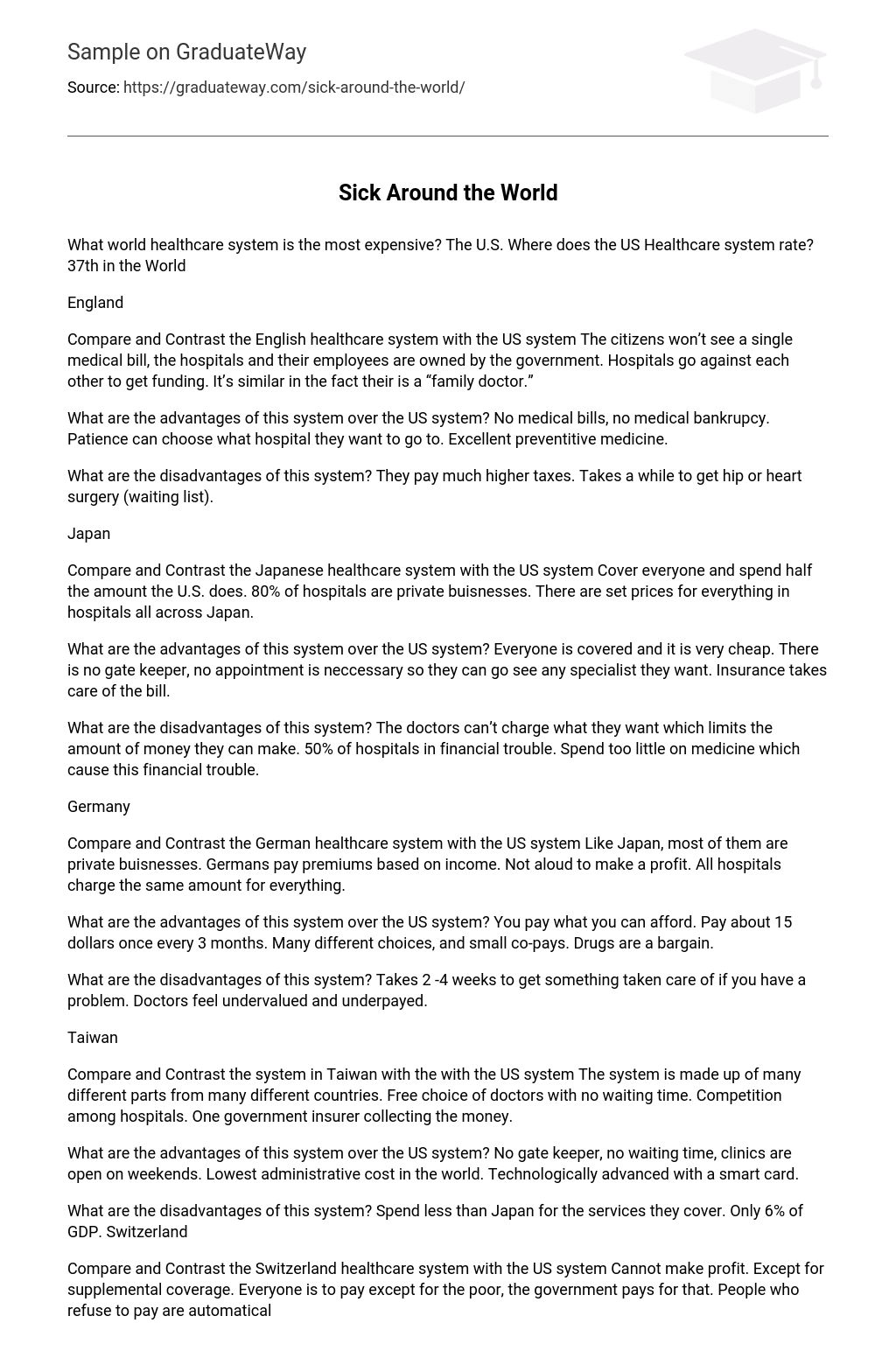The U.S. has the most expensive healthcare system in the world and ranks 37th worldwide.
England
The healthcare systems in England and the US are compared and contrasted. In England, citizens do not receive medical bills as hospitals and their employees are government-owned, while in the US, hospitals compete for funding. Both systems have a common feature of having a “family doctor.”
Compared to the US system, this system offers a range of benefits. These advantages encompass no medical bills or medical bankruptcy, patient freedom in selecting hospitals, and outstanding preventative medicine.
What are the downsides of this system? Some disadvantages include increased taxes for residents and longer wait times for surgeries like hip or heart surgery.
Japan
Both Japan and the United States have the common goal of ensuring healthcare coverage for all citizens. However, Japan accomplishes this objective with only half the expenditure compared to the U.S. Notably, 80% of hospitals in Japan are privately owned businesses. Another distinctive aspect of the Japanese healthcare system is its standardized pricing for hospital services throughout the country.
The healthcare system in comparison to the US system offers numerous benefits. These include extensive coverage and affordability, with no requirement for a gatekeeper and the ability for patients to visit any specialist without scheduling an appointment. Additionally, insurance includes all medical expenses.
What are the disadvantages of this system? The doctors’ ability to set their own fees is limited, which in turn limits their earning potential. Moreover, inadequate spending on medicine has resulted in financial difficulties for 50% of hospitals.
Germany
When examining healthcare systems in Germany, the US, and Japan, it becomes clear that all three countries heavily rely on private businesses. In Germany, individuals pay premiums based on their income, and these businesses are prohibited from making profits. Additionally, all hospitals in Germany follow standardized fees for the services they provide.
Compared to the US system, this system offers several benefits. You only need to pay what you can afford, approximately $15 every three months. There are multiple options available with low co-pays, ensuring affordable access to medications.
The system has several disadvantages. It takes roughly 2-4 weeks to address any issues, if encountered. Additionally, doctors perceive a lack of value and inadequate payment.
Taiwan
When comparing and contrasting the healthcare systems in Taiwan and the United States, several differences can be observed. The system in Taiwan consists of various components sourced from multiple countries. It offers the freedom to choose doctors without any waiting time and fosters competition among hospitals. Furthermore, a single government insurer is responsible for collecting the funds.
In contrast to the US system, this system offers multiple benefits. Firstly, it eliminates the need for a gatekeeper and reduces waiting times. Secondly, clinics operate during weekends. Moreover, it has the lowest administrative cost globally and incorporates advanced technology with a smart card functionality.
What are the drawbacks of this system? Switzerland spends less than Japan for the services they cover, at only 6% of GDP.
The healthcare systems of Switzerland and the United States have several important differences. In Switzerland, profit is only permitted for supplemental coverage, while everyone is mandated to pay for healthcare except for the poor, who receive government coverage. Individuals who do not pay are assigned an insurer and must make their own payments.
Compared to the US system, this system has advantages. It provides coverage for everyone and offers a fixed benefit package that remains consistent across all individuals.
The system has a few downsides as it necessitates determining healthcare fees, which currently total about $750 per household, but there might be a necessity for an augmentation.
In these other countries, there are three limitations. The first is that insurance companies must accept all individuals and cannot make a profit from basic care. The second is that everyone must buy insurance, and the government pays for premiums for those who can’t afford it. Lastly, hospitals must follow a set of fixed prices.
What other country has a plan similar to the one the US has for veterans? The NHS in Britain.
What is the equivalent of the US senior plan in Taiwan?
Germany is a country that is similar to the plan the US has for working Americans.





